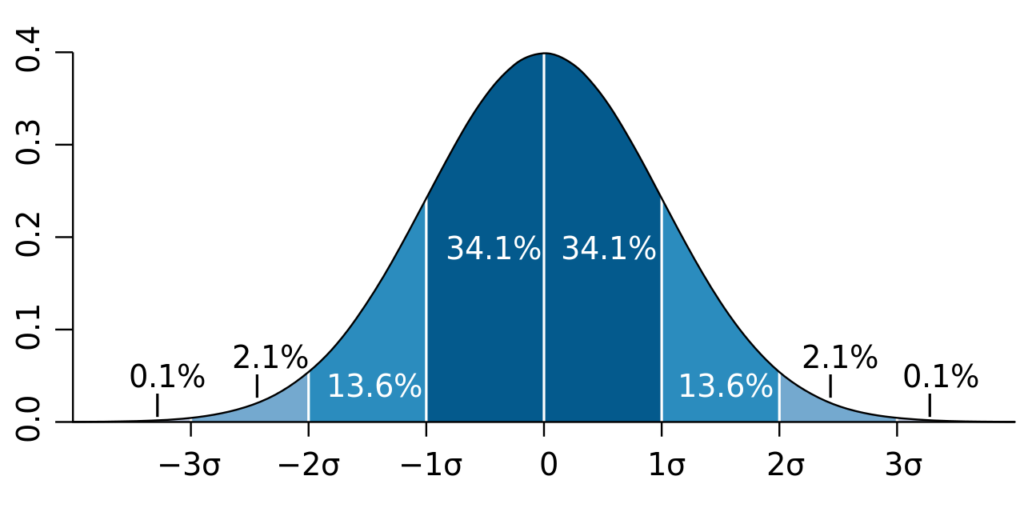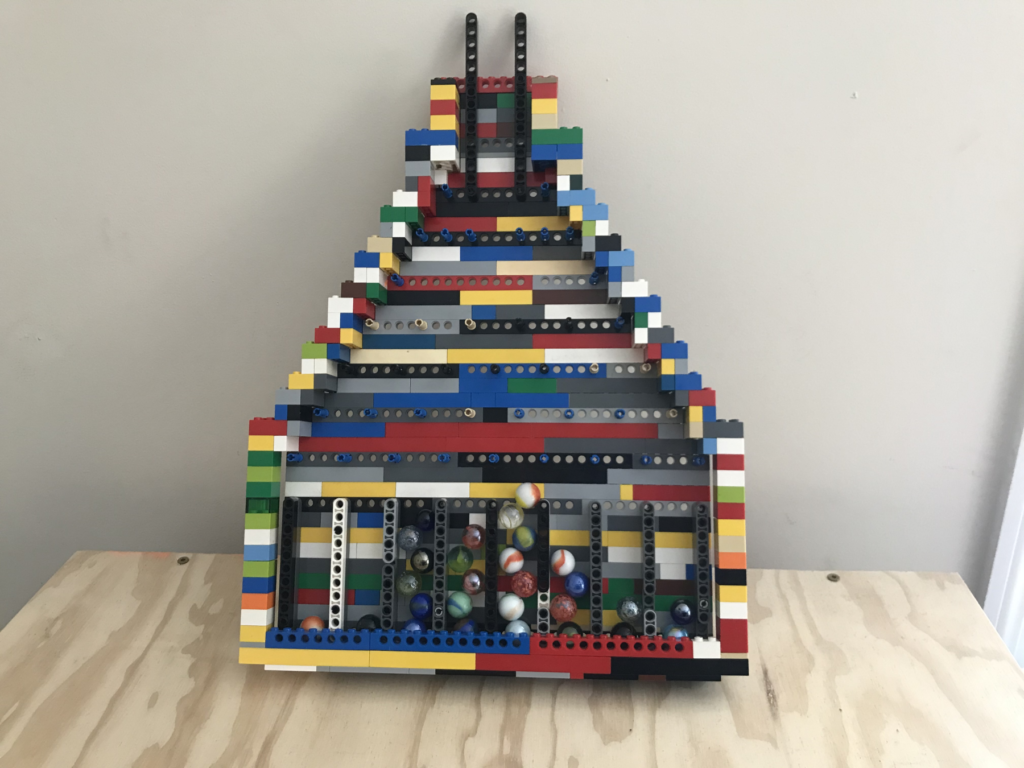
Where Are The Standard Deviants?
For the next couple of Science Tuesdays, I’d like to explore standard deviation — an important concept in statistics, and therefore an important idea for science and thinking about systems. I started explaining that, in a random system where all things are equal, the normal distribution expects things to spread out according to a bell-shaped curve. This can be shown by a Galton Board, a.k.a. Bean Machine:
Standard deviation is how much an actual group of things varies in its distribution from the normal distribution. The higher the standard deviation, the larger the difference from the normal distribution expected.
I had a college professor who used an adjusted grading scale. He’d use a rough system to figure out standard deviation on all the test scores for a test and then add points or take points away till the spread of grades matched the normal distribution. This was a fair way to adjust for the possibility of material or tests being too hard or too easy.
We’re working on building our own Galton Board using legos and marbles. It is less sophisticated than many you’ll see online, but we aren’t really willing to spend a ton of time building one. Legos are great because you can build something complicated in an hours or so. Here’s our first attempt:

What we’ve learned so far:
- You need a lot of marbles to make a good curve.
- How you release can have a big impact. We were using fingers and how we dropped really skewed the results.
- If there’s a pin in the center too close to the release point, marbles will bounce too violently and be pushed towards the sides.
We’re going to keep working on our design, including adding a better hopper to load the board. More soon…




Responses